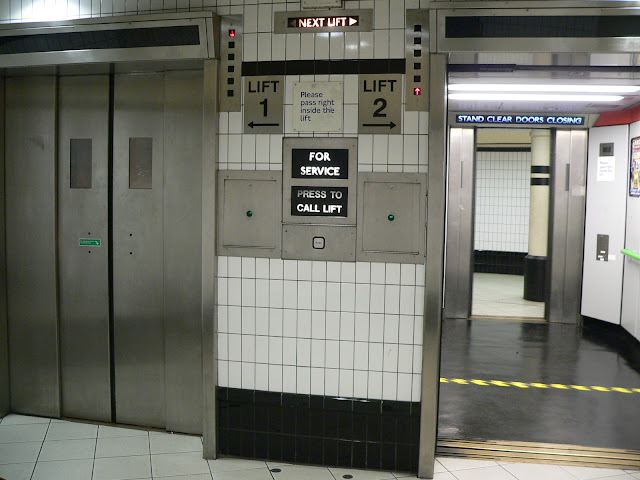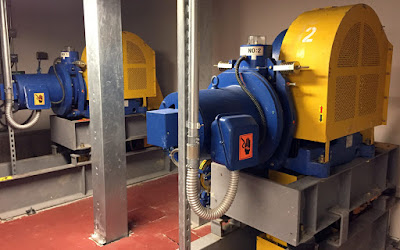Which Elevator You Should Choose Among Traction And Hydraulic Elevator For Commercial Use
Elevators are present in the world's tallest buildings and the world's deepest and most dangerous mines. They can be built indoors, outdoors, or even into rock cliffs.
You might not be aware of the two
major sorts of elevators until you've looked at the machinery behind the
scenes. When deciding whether to use elevator
traction machines or hydraulic elevator machines, consider factors such as space, cost,
and how the elevator will be used.
Although commercial hydraulic and
traction elevators move people and goods, they do it fundamentally differently.
Traction elevators
The cab is lifted and lowered by
belts or steel ropes in elevator
traction machines and a counterweight on a pulley system. In these
machines, gearless permanent magnet motors are utilized to offer power and
efficiency in a small size.
Elevators with traction are the most
prevalent. They can be geared or gearless and powered by AC or DC motors.
Geared Elevators
A
gearbox linked to the motor powers the wheel and moves the ropes in geared
elevators.
These
machines can run at 500 ft/min. These models will be affordable in terms of
initial investment, maintenance, and energy use.
Gearless Elevators
The
sheave is directly connected to the motor in gearless traction elevators.
These
versions can go 2,000 ft/min.
Gearless elevator traction machine models
require a large initial investment and moderate upkeep. They use less energy
than geared traction elevators.
Traction elevator advantages
●
Traction elevators are
used in buildings with travel distances of above 60 feet, including some of the
world's most famous skyscrapers.
● The engine does not have to transfer
as much weight in traction elevators since a counterbalance supports the cab
and occupants.
● Traction elevators are more
energy-efficient than hydraulic elevators in high-rise applications.
Traction elevator
disadvantages
●
Installation expenses
might exceed hydraulic elevators.
●
Only the original
installer or a service partner may obtain spare hardware and perform routine
maintenance.
●
Access may be difficult
since the controls are on the shaft. Henceelevator traction machines are easy to maintain.
●
Rescuing people in an
emergency scenario is challenging since traction lifts require specific
expertise and are hard to reach in the shaft.
Hydraulic elevators
Unlike traction elevators, hydraulic
elevators use a pressure-driven electrical pump to propel hydraulic fluid into
a cylinder. As a result of the pressure pushing a piston, the elevator rises.
Hydraulic elevator fluid has
historically been petroleum-based, but technological advances have made it
feasible to use a biodegradable, fast renewable fluid to improve elevator
performance.
Conventional
Hydraulic Elevators
These have a retractable piston that extends below the
elevator pit's floor.
Some designs use a telescopic piston that needs a
shallower pit. The maximum travel distance is 60 feet, unlike elevator traction machines.
Hole-less
Hydraulic Elevators
Each side of the cab has a piston. The telescopic pistons
are secured at the pit's base, eliminating the need for a sheave or hole.
Telescoping pistons provide 50-foot travel. Non-telescoping pistons only travel
around 20 feet.
Roped
Hydraulic Elevators
Roped Hydraulic Elevators move the elevator with ropes and
a piston. A maximum of 60 feet is possible.
Hydraulic elevator advantages
● Hydraulic elevators have been used
for over 50 years in constructions with less than 60 feet of travel. They are
less expensive to manufacture and have fewer moving parts, decreasing
maintenance and repair costs compared to elevator traction machines.
● They use less energy while waiting
and almost no electricity when lowering the cab. In low-use, low-rise
scenarios, hydraulic elevators can save energy over traction elevators. These
benefits can reduce the embodied and operating carbon footprint of hydraulic
elevators.
● They cannot reach the same
velocities as traction elevators. However, they can handle greater payloads.
● They used to need drilling holes in
the ground and extending and inserting hydraulic fluid cylinders. However,
technological advancements have resulted in above-ground hydraulic elevators
powered by telescopic jack units mounted on the pit floor.
● Hydraulic lifts have subterranean
pressure and might be dangerous if not maintained properly.
● The hydraulic elevator's motor runs
upward, consuming double the energy of an elevator traction machine.
● Hydraulic lifts can rise to 150
ft/min. If the lifting performance exceeds this threshold, it becomes
uncontrollable.
● The hydraulic elevators lack a
safety system and rely on the weight of the framework to maintain their place
in the shaftway.
● If there is a breach in the
underground system, oil might spill into the ground and damage the public water
supply.
Space Requirements
The
quantity of space you have maybe a decisive factor in selecting an elevator.
With the machine room at the top of the shaft, many hydraulic elevators may be
placed. This is useful for reducing space and keeping the oil temperature high
enough for the machine to function properly.
Traction
elevators, even the newest machine-room-free models, take up a lot more area.
Cost Differences
Hydraulic
elevator and traction elevator expenses are not black and white; they are not
well defined.
An elevator
traction machine is more expensive to construct than a hydraulic
elevator. Still, once completed, it saves energy since it elevates the cab with
counterweights rather than an electric pump. In contrast, a hydraulic elevator
is less expensive to buy and maintain.
Energy usage
Traction lifts generally use less
energy. The two types of lifts work differently. To lift a hydraulic lift car,
the pump works against gravity, but the energy is lost when it falls. The
counterbalanced traction lifts utilize less energy.
Conclusion:
You've been waiting for the big
reveal! The proper elevator for your building may depend on the building's
usage or the tenant’s needs. Hydraulic elevators are a better alternative for people on
a budget and need only one. Electric elevators are the sole option for
high-rise buildings.
While hydraulic lifts may not give
an easy ride, they may handle far more loads than a traction lift. They are
generally utilized in five-story or smaller structures, while elevator traction machines are
frequently employed in mid-to high-rise buildings where speed is more vital.
They are also less lent than traction equivalents.



Comments
Post a Comment